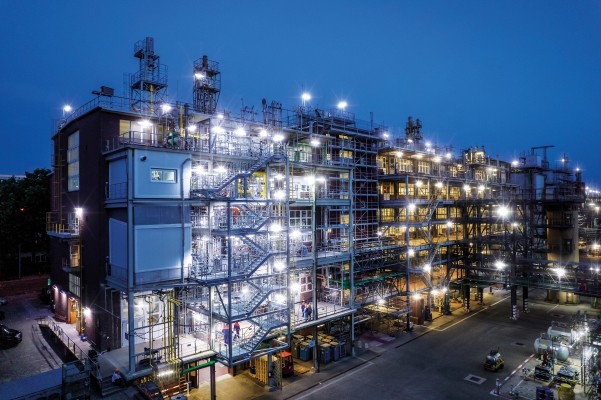The facility is slated to produce up to 2,000 tons of low-emission hydrogen and 6,000 tons of solid carbon each year

The methane pyrolysis test facility at Ludwigshafen site. Photo: BASF
BASF and ExxonMobil have announced a strategic collaboration to develop methane pyrolysis technology for producing low-emission hydrogen.
This joint effort will include a demonstration plant in Baytown, Texas, to advance the technology toward commercial readiness.
The partnership aims to create a cost-competitive, efficient method for generating low-emission hydrogen from natural gas without producing CO2 emissions during the process.
The facility is slated to produce up to 2,000 tons of low-emission hydrogen and 6,000 tons of solid carbon each year—data the companies say will be essential to proving the technology’s commercial viability.
“This collaboration combines technological innovations and industrial expertise of ExxonMobil and BASF to accelerate the development of low-emission hydrogen,” said Mike Zamora, president of ExxonMobil Technology and Engineering Company. He said methane pyrolysis could be a game-changer in regions where carbon capture and storage is difficult or impractical. “ExxonMobil brings decades of deep technical knowledge in methane pyrolysis and a shared commitment to innovation.”
BASF has spent more than a decade refining methane pyrolysis through a research program supported by the German Federal Ministry of Research, Technology and Space. Dr Stephan Kothrade, BASF Board Member and Chief Technology Officer, said the joint effort aligns with the company’s “Winning Ways” strategy and its ambition to become the preferred chemical partner for customers pursuing green transformation.
“This novel technology generates competitive low-emission hydrogen and has high potential for further carbon-footprint reduction,” Kothrade said. “By combining BASF’s process innovation with ExxonMobil’s scale-up expertise, we are bringing this cost-efficient solution closer to economically viable industrial deployment.”
Methane pyrolysis uses electricity to convert natural gas or bio-methane into hydrogen and solid carbon, without generating process-related CO2 emissions.
This technology is designed to be more energy-efficient than water electrolysis and uses existing gas infrastructure, making it an attractive option for industrial use, especially in regions where carbon capture faces challenges.
Construction of the demonstration unit at Baytown will mark the technology’s largest test to date—and, if successful, could set the stage for a new wave of industrial hydrogen solutions with sharply lower emissions.
Subscribe to our newsletter & stay updated.